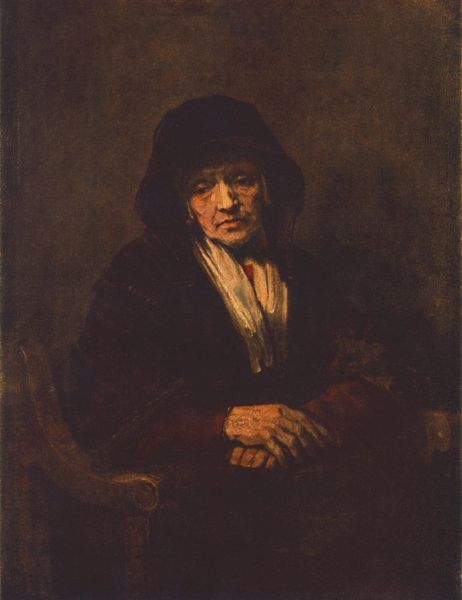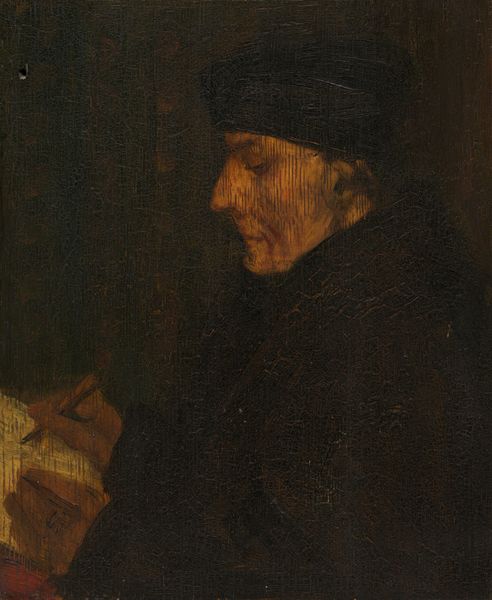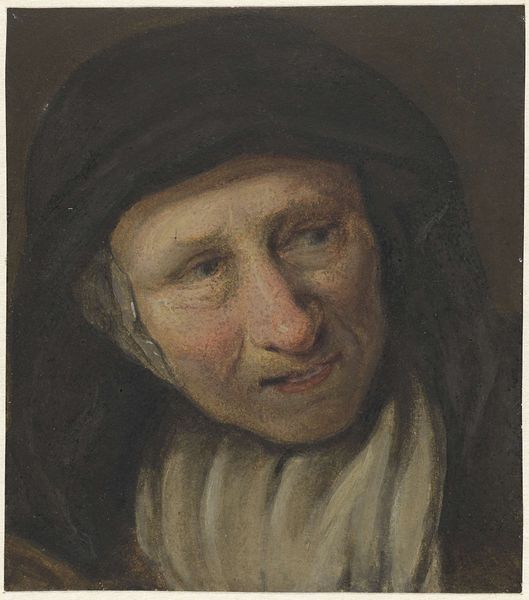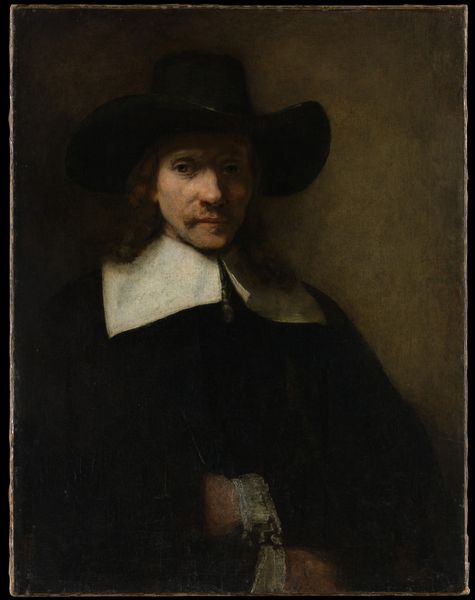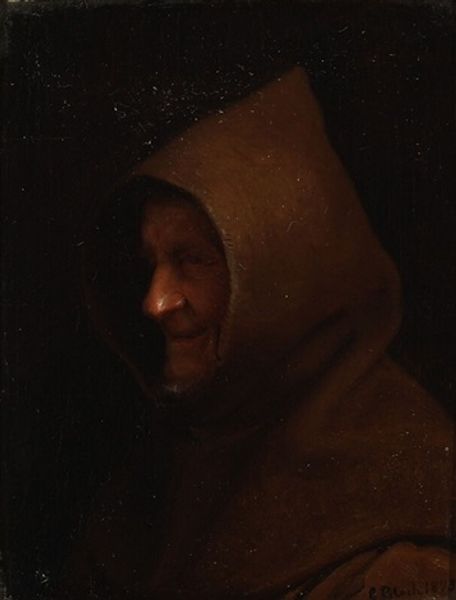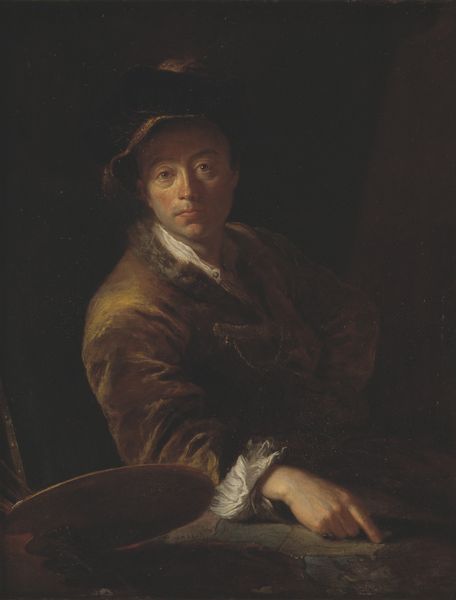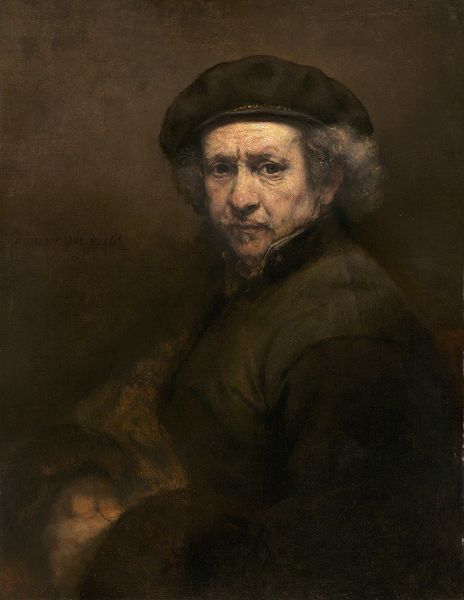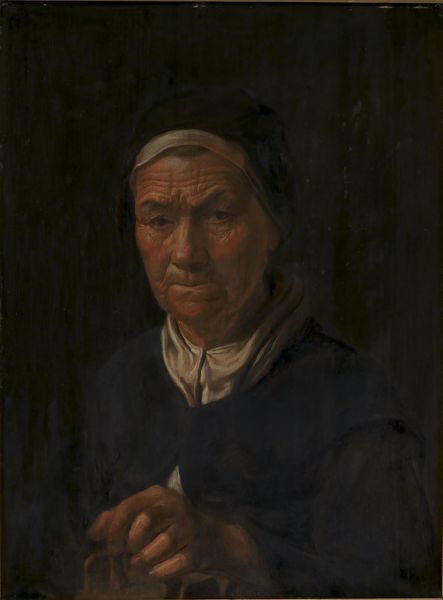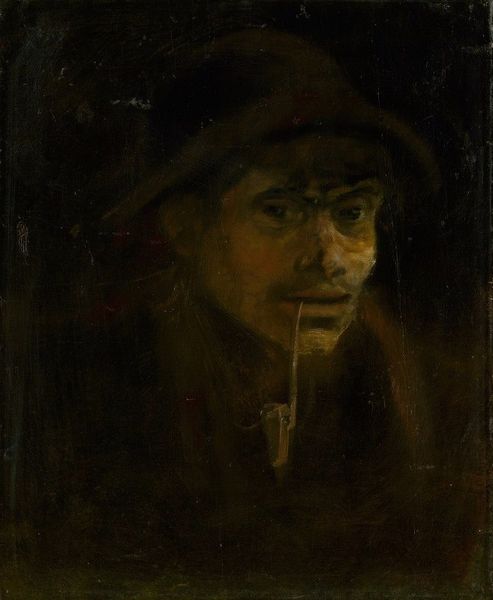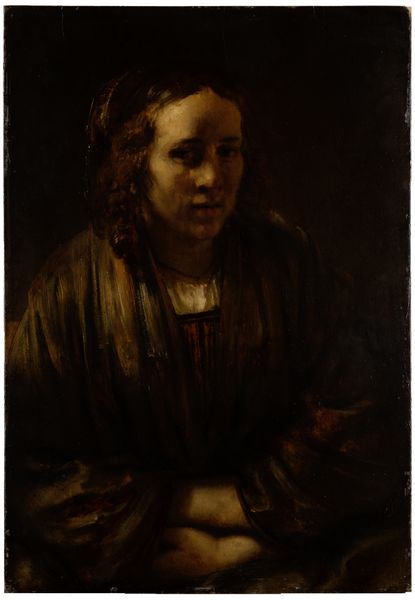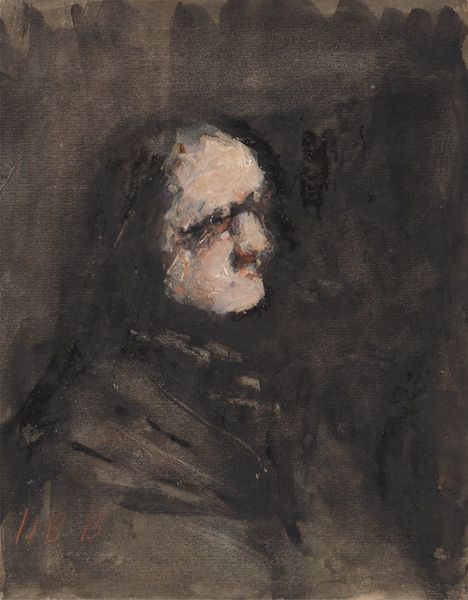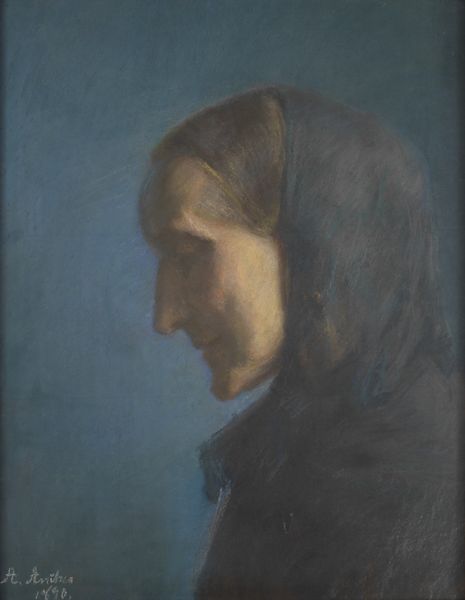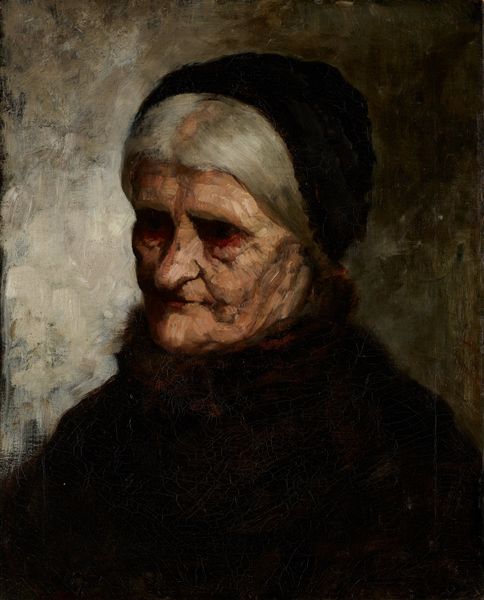
painting, oil-paint
#
portrait
#
baroque
#
dutch-golden-age
#
painting
#
oil-paint
#
realism
Dimensions: 75 cm (height) x 65 cm (width) (Netto)
Curator: This portrait, entitled "An Old Woman," was painted in 1655 by Rembrandt van Rijn and currently resides at the SMK, the National Gallery of Denmark. It’s a captivating, if somewhat somber, piece. Editor: Indeed. My immediate reaction is one of shadowed intensity. The limited light feels almost oppressive, drawing your attention squarely to her face. Curator: Absolutely. Rembrandt’s masterful use of chiaroscuro lends itself to a deeply psychological portrait. Note how the dark veil or hood nearly obscures her, creating a sense of mystery and introspection. What do you see in her gaze? Editor: A quiet resignation, perhaps? Or a lifetime of stories etched into those wrinkles. I think it portrays the experience of aging in 17th-century Dutch society, which often romanticized youth. Curator: Exactly! The folds and lines aren't concealed but highlighted, symbolizing accumulated wisdom or perhaps the hardships she has endured. The dark attire, set against an even darker backdrop, evokes a specific period. Do you feel there might be specific cultural symbols here? Editor: I see a hint of Dutch Calvinist influence—austere clothing and emphasis on inner reflection were central cultural values at the time. But in some way, I read the shadow also as symbolic of loss. Is there something funereal about this piece? Curator: That’s a compelling point. Black clothing held specific meanings, including association with mourning, yes. I agree with the suggestion that in Dutch Golden Age art we observe attempts to capture both physical likeness, as a demonstration of skill and patronage. However, there could also be a much more personal aspect at play here. Editor: Definitely. Rembrandt was masterful at making personal statements through paint. Even the texture contributes – those visible brushstrokes seem to emphasize the raw and lived quality of the subject’s being. This, for me, goes beyond the formal requirements of a standard commission. Curator: And consider this portrait today, hanging in a museum space. This type of image still compels us to stop and gaze at, and consider. We assign value to such realistic imagery today that those that commissioned and later hung it in their homes probably did not expect. Editor: A haunting work that reminds us of the powerful narratives held within faces marked by time, reinterpreted, always, through modern eyes.
Comments
No comments
Be the first to comment and join the conversation on the ultimate creative platform.
